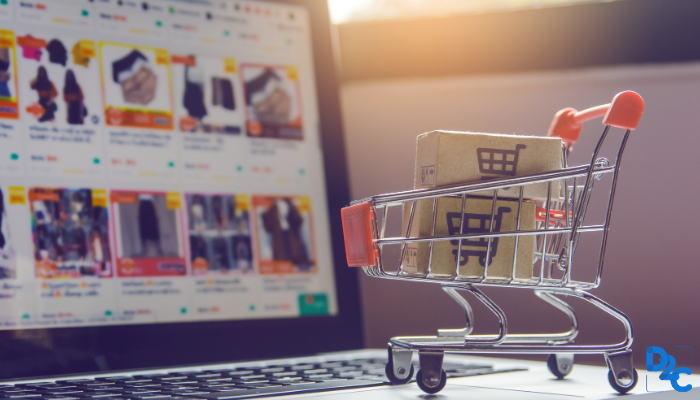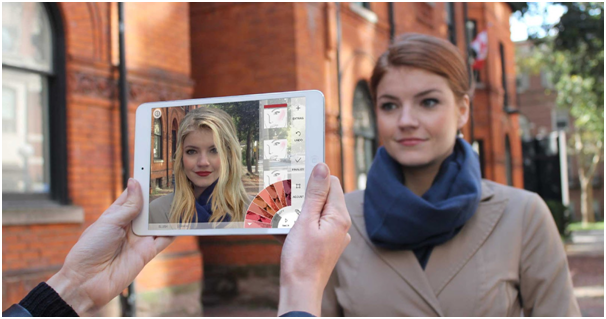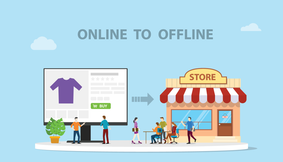Transformation of the Indian retail industry via the consumer engagement path - A Case Study

The Indian retail industry is known to be one of the fastest-growing in the world. The country stands tall as the fifth-largest and preferred retail destination in the global market and is amongst the highest in the world when it comes to per capita retail store availability.
For a long time, retail meant brick and mortar setups that catered to everything from essentials to luxury needs. But over the years, this definition changed. Consumers became aware of their growing needs and the demand for more grew at a rapid pace. To keep up with this demand and the changing behaviour of consumers, the retail industry witnessed a transformation. Stores, today, look at a lot of aspects, which earlier were oblivious to them. From the footfall, store ambience, the display space to the store design, checkout area and shelf design, everything now has to evolve with the customer’s taste!
Moving rapidly, at an exponential pace, retail development has taken place not only in major cities and metros but also in tier II and tier III cities. In this case study, we will take a look at the Indian retail market and follow the trends that govern the industry.
What’s happening?
Stuck in a time where a pandemic has gripped the country and the world, we have witnessed an unparalleled transformation in industries across the globe in terms of growth as well as the medium of communication. In this respect, the retail industry was not far behind. An analysis by Assocham and Primus Partners reflects how the industry that is most impacted by consumer demand is witnessing a change in consumer preferences and is expected to be driven by artificial intelligence and data-led opportunities.
It further states that the need for digitisation of stores along with an increase in the integration of micro, small and medium enterprises (MSMEs) in the value chain will lead to growth and further acceleration of data-driven retail.
It wouldn’t be wrong to say that the ongoing pandemic has drastically influenced the change in consumer behaviour. A 24% increase in the consumption of internet has been noted which in India alone, is expected to reach 639 Mn by the end of the year 2020. People are now more connected with their devices for shopping, payments, etc.
A fusion of such factors has contributed to Digital Transformation where technology is being employed to create revolutionary business innovations that have the potential to disrupt and transform existing industries or even create entirely new ones.
The offline to online switch
The Assocham-Primus Partners' joint report goes on to say that the role of offline stores is about to change in terms of collection and experience. Consumers will be inclined to avoid crowded places and would, in turn, prefer the option of buying and paying online and in-store pick-up in line with the precautionary norms. In 2019, around 85 per cent of the market was unorganized and this segment has ever since the beginning dominated the Indian retail sector, which now calls for technological disruptions.
Services and products that make people more independent will witness a considerable increase in demand. Moreover, the report said, that items like dishwashers and washing machines that reduce an individual’s dependence on support staff will see a noticeable rise in demand.
In addition, branded food commodities are about to witness a rise in demand, in the coming days, owing to the perception of hygiene, source credibility, quality and safety standard. Re-assurance of customers on these parameters will help in creating a more robust and organized segment for food products, mentioned the report.
Inclusion of Augmented Reality
One major technological change has been the advent of AR - Augmented Reality, which essentially refers to a technology that can superimpose a computer-generated image on a particular user’s view of the world. In fact, the fashion industry, in several aspects, seems to be well-suited to the technology of augmented reality.
People, until now, had to buy clothes, makeup and jewellery from stores in order to try them on before actually buying it. Even if they chose to order online, they’d have to wait for days for the package to arrive. But augmented reality has changed the functionality of things, bringing about a revolutionary change in the online buying experience of users.
One awe-inspiring example is that of IKEA, the leading manufacturer of furniture across the world. Amongst the few companies who help its customers make better buying decisions with the use of AR, it quickly adopted the change and in 2017, the company built the “IKEA Place” app in collaboration with Apple. This app allows shoppers to view products by IKEA in a superimposed graphics environment.
The ad by IKEA above quite appropriately depicts how AR actually works in the real world.
On similar lines, in 2018, Asian Paints incorporated a version of augmented reality in its mobile app - Colour with Asian Paints. All you need to do is click a picture of the wall you’d like to paint and select the colour amongst the numerous options available on their virtual palette. You’ll get a look and feel of what your wall will look like after it gets painted in the colour of your choice.
L’Oreal is another international cosmetics brand that delved into the usage of AR. Only recently did they make the purchase of ModiFace, which essentially is an app that helps shoppers get a feel of the makeup they’d like to buy through the front-camera of their cell-phones. Moreover, this idea was applauded by the customers so much that its sale went up to 8% from 5%.

Across the globe, augmented reality is being harnessed to enable try-ons because it is known to work in real-time. The said technology is so appealing and powerful that it has the ability to automatically detect and capture the face of the person accessing the shopping platform, as soon as the interaction is made.
Advanced technologies do not even need manuals for adjustment. Instead, they directly transport the users to the nearest digital availability of an in-store experience. This improves the market positioning of brands, increases their sales and leads to higher customer engagement.
The path forward
The technology of Augmented Reality, today, has come a long way since the time it was introduced in the industry. Businesses that function in the retail industry have recognised the value it brings to the table and are now looking at practical requirements of AR app development.
With this, another barrier that has been broken is that of global connectivity. The rise of connectivity across the world means consumers now are no longer bound by location. In terms of numbers, the stats say that 20% of companies are planning to adopt AR by next year while another 13% are looking at adopting VR or Virtual Reality. If long term adoption is considered, these numbers shoot up to 37% and 25% respectively.
The Digital India programme is on a mission to reach out to more people from tier II and tier III. With that happening, the country is witnessing a considerable increase in the use of digital technologies. This rapid consumption of technology has disrupted the Indian retail industry, leading to astonishing developments in the retail landscape.
The retail outlets have come a long way since their day of inception. With digital transformation revolutionizing the way these outlets previously operated, it will be fascinating to see how the use of artificial intelligence and augmented reality in the retail industry will optimize the in-store experience of customers in the near future.
Login to continue reading
And access exclusive content, personalized recommendations, and career-boosting opportunities.
Blogs you need to hog!

What Innovation Does For Efficiency and Competitiveness in a Corporate Sector?

Online to Offline Commerce- Everything one needs to know

How Do You Work Around Branding Guidelines To Be Guidelines And Not Limitations? | Alekhya, Brand Manager- Vivel, ITC | Dove, Unilever













Comments
Add comment